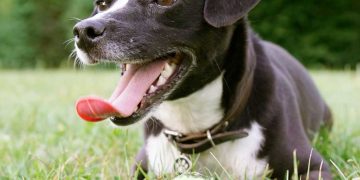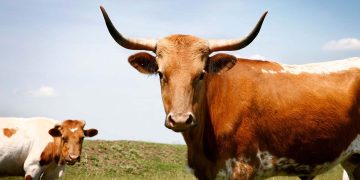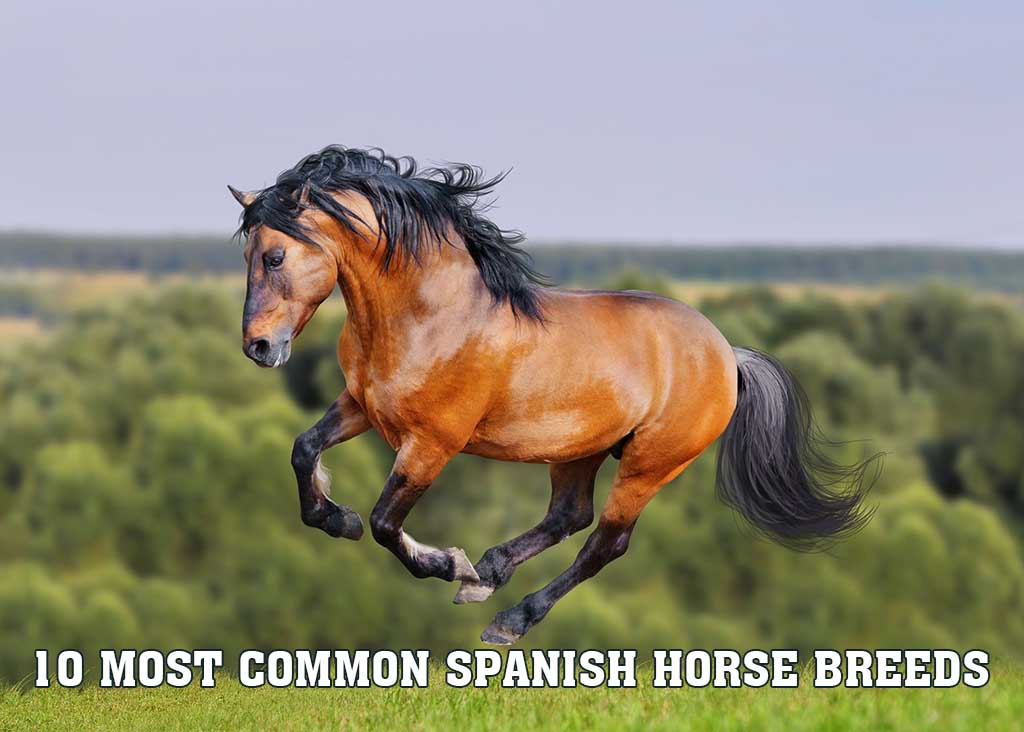Spanish Horse Breeds – A lot of people think that the horse has been domesticated for thousands of years, but it’s actually only been around since about 4,000 BCE. That means we’ve been breeding horses since pretty much the dawn of human civilization, which means there are a ton of different breeds out there! Some breeds are popular because they’re considered “hot” or “cool,” while other breeds have been around for ages and have earned their status as classic equine specimens. Whichever way you look at it though: horses are magnificent creatures and I’m glad we can share them with each other.
Pure Spanish Horse
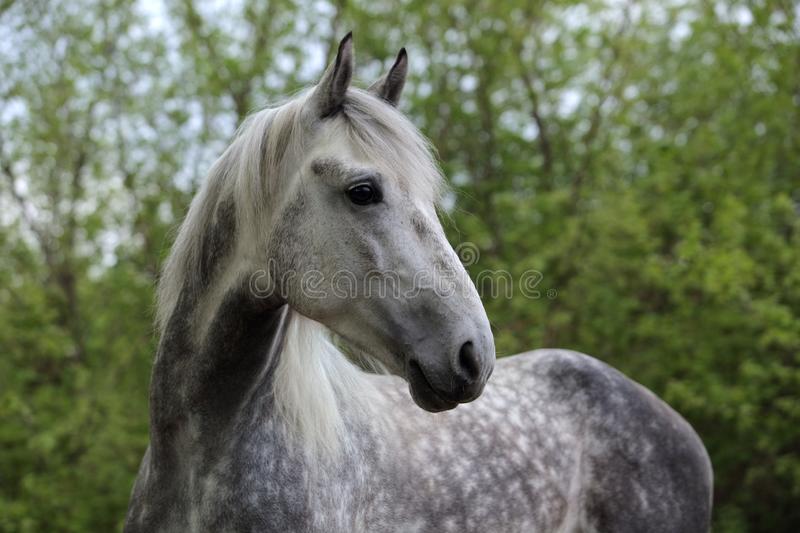
The Pure Spanish Horse, also known as the Caballo Español Puro, is a breed of horse that has its origins in Spain. It is believed to be one of the oldest breeds of horses on Earth, dating back to around 4,000 BC.
The Pure Spanish Horse has been used throughout history for a variety of purposes including war and sport. The breed also plays a big role in Spanish culture; it’s often used by bullfighters and jockeys alike!
There are several other breeds related to this one which we’ll go over below:
The Andalusian or Pura Raza Española
The Andalusian or Pura Raza Española is also known as the Spanish Horse. The breed originated in Spain and is named after the region from which it came, Andalusia. It’s one of the oldest breeds still in existence today and has been used for centuries for work on farms and cattle ranching, as well as for racing purposes.
The characteristics of this horse include a dark coat with white markings on its legs, mane, tail and face; an arched neck that curves slightly toward its back; large eyes; a short muzzle with big nostrils; strong legs with small hooves; black skin underneath their hairless tail (which makes them very sensitive to sunburn); long pasterns (from knee joint to fetlock); high-set hocks (from knee joint to fetlock).
You can recognize an Andalusian by its temperament: they are calm yet energetic horses that are playful but not aggressive towards humans or other animals. These traits make them ideal riding horses because they’re both obedient enough not to go against your commands but still energetic enough so you don’t get bored during long rides!
As far as importance goes: these beautiful creatures have been used throughout history for everything from transportation through battle-fields all over Europe until modern times when they became popular among equestrians everywhere thanks largely in part due their agility when performing dressage movements such as pirouettes where riders must execute complicated sequences while maintaining balance atop their mounts without falling off!
Lusitano

The Lusitano is a horse breed from Portugal. It is known for its agility and speed, as well as its endurance and docility. They are bred for racing, dressage, show jumping and eventing.
The Lusitano was developed from native Portuguese horses from Galicia, Asturias and Leon in the north east of Spain by crossing with Arabian and Barb bloodlines imported into Europe during the Crusades. The name Lusitano comes from Portugal’s national epic poem “Os Lusiadas”, meaning “Portuguese”.
Peruvian Paso
The Peruvian Paso is a breed of horse that originated in Peru. It is known for its smooth gait and this is the reason for its name, which means “smooth walker” in Spanish. It is also called the Paso Fino or Paseo Fino horse, because it was developed to move at a pace faster than the paso corto (short walk) but slower than a trot. This breed has been used as both riding horses and driving horses due to their ability to move with speed and grace over rough terrain while maintaining balance.
The Peruvian Paso comes in many different colors including bay, black, chestnut, buckskin and gray; however no two foals look exactly alike! The average height for these horses ranges from 13-15 hands high (52 inches – 63 inches); however some may be taller or shorter depending on the individual animal’s conformation (build).
Andalusian-Lusitano Cross
If you’re looking for an all-around horse with great dressage ability, the Andalusian-Lusitano cross is a great choice. The two breeds share many traits, including their high intelligence and strong work ethic. These horses are also used for show jumping, eventing (a type of three-day competition), and show hunter (a type of four-legged version of steeplechase).
The cross between these two breeds was first bred in Spain around 1900. It’s since become a popular choice among riders who ride Western saddles because it has some characteristics that make it more comfortable than other Spanish breeds: for instance, its back tends to be flatter than that of other Spanish horses so it’s easier on your back when you’re riding long distances.
Puerto Rican Paso Fino
The Puerto Rican Paso Fino is a breed of horse that originated on the island of Puerto Rico. It has been developed over many years, and even though it is not an ancient breed, it has roots in Spain. This horse was bred for use by farmers to work with cattle as well as for transportation purposes.
The appearance of this horse is muscular but sleek, with powerful hind legs and a slightly concave profile. The head is clean-cut with a straight profile and small ears that are sometimes cropped short or left natural. The coat can be any color except palomino (a golden chestnut).
Puerto Rican Paso Finos are known for being intelligent horses that have soft temperaments and gentle dispositions when treated well by their owners; however they do have some quirks when dealing with people who are unfamiliar to them – for example if someone new comes into their paddock they may act wary or skittish until they get used to that person’s presence which could take days before becoming comfortable enough around them where there won’t be any fear anymore! These types of behaviors make these types good choices if you intend on taking long rides out into open spaces where there aren’t many distractions nearby because they’ll likely hold up well against most elements surrounding us such as heatwaves from nearby forest fires burning near our homes here on Earth…
Mangalarga Marchador
The Mangalarga Marchador is a gaited horse breed from Brazil. The name means “marching mare,” and refers to the smooth, rolling gait of these horses. The breed has been around for hundreds of years and was used in battle during the colonial period. Today, it’s used as both a working horse and show animal, but it’s not widely known outside of South America—and there aren’t many studs available for breeding outside Brazil either!
The Mangalarga Marchador has a gentle temperament and good stamina as well as an ability to carry weight in its saddle or pack saddle effectively. It stands at about 15 hands high (or 60 inches) and weighs around 1,000 pounds on average. Its body type is heavy-boned with long legs that allow it to move at great speeds over long distances without tiring easily–but don’t let that fool you: this breed can also be used for dressage competitions!
Azteca
The Azteca is a Spanish breed of horse, originally used as a warhorse. In Mexico, it is still used as a riding horse and for pleasure riding. It is strong, powerful and athletic; it loves to jump and can gallop at high speed. The Azteca makes an excellent show jumper or dressage horse because of its grace and agility. The Azteca has long manes and tails that are often braided with ribbons or bows for show purposes. This breed is very friendly and easy to train; however, some can be headstrong or have “spunky” temperaments if not properly trained as young horses.
Paso Fino
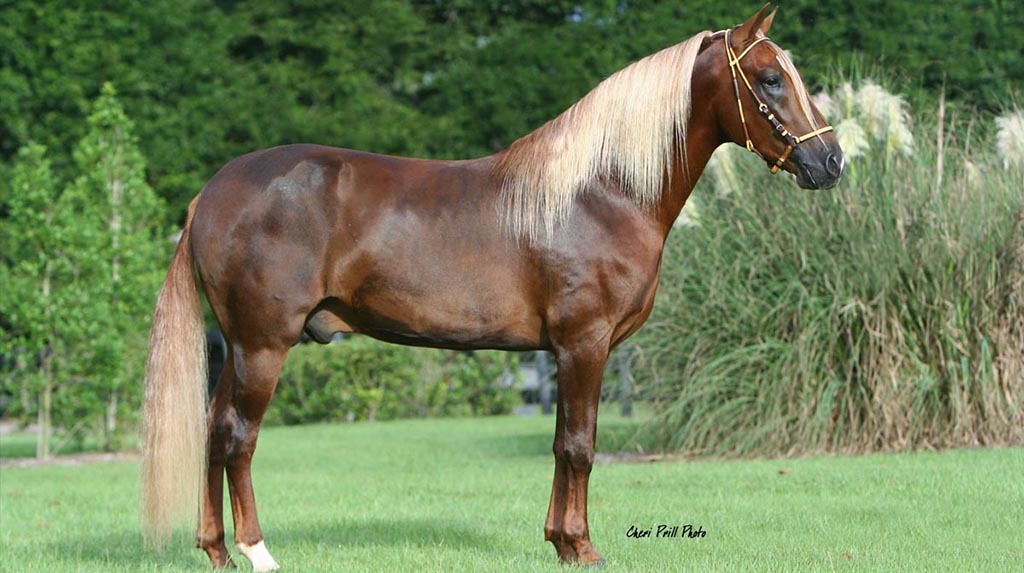
The Paso Fino is a breed of horse known for its smooth gait. The Spanish word paseo fino means “fine step”, and the breed was developed in the Caribbean and Central America to move cattle quickly and efficiently. The Paso Fino is also used for riding and driving.
The Spanish brought their horses with them when they settled in what is now Colombia. There they bred these horses with local breeds to create a taller, heavier animal that could carry weight more easily on long journeys over rough terrain. As time went on, these animals were bred primarily for their smooth gait over speed or strength.
Horses are beautiful, and these are some of the most beautiful horses.
There are many horse breeds, but here are some of the most common ones in Spain:
- The Andalusian is a breed of horse that originated in southern Spain. This breed is known for its long mane and tail, as well as its elegant appearance. It also has an excellent temperament.
- The Lusitano breed was first bred to be used for bullfighting. It has a strong sense of balance, which makes it perfect for this task! This breed can also be used for dressage or show jumping competitions because of its athleticism and skillful movements.
- The Spanish Barb is believed to have been developed from ancient ancestors brought over from North Africa centuries ago during the Moorish invasions of Iberia (Spain). This beautiful horse was used mainly as a cavalry mount because of its strength and speed in battle situations; today it’s often seen at equestrian events such as dressage competitions or western rodeos due to its athleticism and intelligence when working with riders!#ENDWRITE
Conclusion
We hope you enjoyed learning about some of these great breeds of horse! They may not all be native to Spain, but they are still beautiful and unique animals with long histories. With so many different breeds to choose from, it can sometimes be difficult to decide which one is right for you. The best advice we can give is to do your research and find out what kind of horse would work best for your needs and lifestyle before jumping into anything too quickly.
Read More:




